It is easy to ignore the homeless people at the traffic intersections; or maybe you find the homeless cause compelling, but wonder why these people are not using the myriad social services that are purportedly set up to aid them. The short answer is there aren't any.
I know you were not prepared for that answer. You were led to believe there would be something known as "rapid re-housing" under the new Obama Administration. Those monies were apparently only given to those who were losing their houses, to urban development companies buying up more (to be used as) low-income properties, or to other non-profits in the housing game to pay salaries. All in all, I call this feeding at the public trough. This is not a kind assessment, and there may be good people involved all around. Still, these new monies are getting to the homeless very indirectly or not at all.
And the homeless are not all alike.
Homelessness has a new face: besides the families with children who could not stay in their homes, there are people who lost jobs and the unemployment benefits have run out; and there are many women, young and old, who have failed to make enough money in their lives or to marry well. The old face of homelessness is more like that of my friend, Bob, who is an alcoholic.
Nonetheless, even for the most targeted homeless, those families with children who lost their homes in recent years, rapid re-housing requires some money. The federal government through various local agencies will pay a portion of rent or mortgage, but not all. Someone has to have a job, and jobs are in short supply. For the ever-growing numbers of homeless people, there will be no place to live but in their vehicles. They will learn what it is like to be run off from one parking lot to the next because even as the police force dwindles in this poor economy, it still serves a public more frightened of homelessness than burglaries or murders.
Of course, there are the shelters.
The shelters in this town turn out to be just one, one big intake center. Perhaps long ago it was a model of social service efforts, but that had to be some time before the Reagan era with its mission to roll back socialism and to take away from the taxpaying public any of the benefits that could cushion a fall in case one lost his economic footing. Back in the money-mongering 80's, we didn't worry about that.
Now that anyone in the erstwhile middle or working class can slip into poverty, that big shelter is noticably inadequate for such a person, that is for the requirements of normative housing. Noticing my look of amazed shock as I stood in the lobby, a seeming-sane resident of this shelter called my attention to the fact that the windows and doors are not barred; but since all of the apartments in which I ever lived in the nicest neighborhoods of Chicago, Manhattan, and San Francisco had bars on windows and triple latches on the doors, that meant only one thing: the crazies were on the inside.
As one approaches the large central-city shelter, the numbers of people thicken. Street scenes can have their appeal; a mere weekend can feel like a holiday among people who obviously have nothing to do but loll, chat, and sip lattes. Yet, here on Market Street, the friendliness is too eager, and the ogling and flip remarks, to be expected, make me wish I were wearing a burka. There is a lot of chatter, but upon closer view, it is coming from individuals who are talking to themselves and just wandering about. What really begins to bother me, though, is the subtle degree of quirk, which is scary even if it is hard to describe. Perhaps it is just the look on someone's face or the way someone turned the straw in a cup. Then it hits me: I am in bedlam.
All the same, I go through the paces. Given that money is running out, I have to give this endeavor of seeking shelter my best effort. After all, the truck in which I live requires money for gas, a kind of rent it imposes, you might say; and the cell phone and internet bills have to be paid. We are already at $500 a month for these few basics. Anyway, I needed to find out what services now existed since I last looked (when George W. Bush was in office) as there seemed to be more promise with the new Administration, and I wanted to be sure I was not just holding my nose in the air.
At the reception desk, I ask about becoming a resident and am referred to a window outside and around the corner. The area is crowded with almost thirty people waiting to get inside for a few minutes in the shower. I am at the Day Center for non-resident homeless. Just as I step up to the window, an agitated, wild-eyed woman who cannot wait her turn flits from one side of me to the other. The worker asks me if I can wait a moment while she takes care of the woman whom she calls by name: she turns out to be a resident.
Despair and the impulse to vomit surge up. I can feel my nerve ends.
The worker invites me through the double doors and into her office. The interruptions by residents continue, but our business is simple and brief. She takes my photo, and I am given a number. They are both on an orange plastic card that I will wear, like the other residents, on a cord around my neck if I get in.
The next step is to see a case manager, and I am told to go to another, smaller center just up the street approximately three blocks away. The worker asks me if I think I would like someone to accompany me. She has an earnest, worried look, and I cannot imagine what that means. "Oh, no, I'm fine," I say and, confirming the location with her again, I set out walking.
Turning the corner from Market onto 17th Street, I step into another world. I might be in Haiti amid refugees. This is a one-way street, and there are people three and four deep lining the sidewalks with their grocery carts, bicycles, boxes, and stacks of stuff. People are crossing the road here and there, going back and forth from the Day Center. There are radios playing, ladies chatting as though they had just hung out their laundry, people sitting around on sofas and old chairs, some lying down or sleeping, and a group sitting around a card game. Despite what appear to be attempts to normalize an obviously inhuman situation, I am feeling the desperation just beneath my skin. Fear floats up just below consciousness, the kind that usually nauseates me.
The numbers of people grow greater the closer I get to the Day Center. In the courtyard and approaching the building itself, people lying in blankets or on mattresses are wall-to-wall. Maybe this is where the sick can rest. Inside the building, there are rows of connected plastic seats that look very much like any other government aid office. The seats are mostly filled with men, but they do not seem to be waiting for anything or anyone. Those numbered, government office windows are missing. Instead, there is a large reception area with several people behind the counter, and I am next in line.
It seems that people are just here because there is no other place to go. Having nothing in particular to do, most of them do nothing. I feel sick and scared. My nerve ends are burning, and I am very uncomfortable with this degree of fear; but I need to see the case worker.
Ms. Alma is a small-built, spirited, genial black woman. Her skin is deeply black, and her face has the kind of wrinkles that are earned. She has the aura of someone who marched in the South with Dr. King and committed her life to serving others as so many of her generation did. As I take a seat in her office, I notice the prayer plaques on the walls and angel figurines covering every available surface, rows and clusters of them on the window sill, on top of shelves, and on file cabinets. There are over a hundred, and they dominate the room. I am not surprised. The weird swamp of humanity that has washed up on her shore are her wards, and who could know what to do for them, save God and the heavenly host. Where I am concerned, anything that can keep the heebie-jeebies away is welcome.
However, Ms. Alma informs me that I must show up and check in at the Day Center every Monday morning at 6:00 a.m. for the next six weeks in order to be elegible for residency in the shelter; but there is an exception if I am working: in that case, Ms. Alma will check me in by phone when she gets to work at 7:30.
I admit I lied about working. I was not sure I could stay in my right mind ever seeing this place again. Somehow, though, I blew it, or they are just quick to knock people off the rolls. In the first two weeks, Ms. Alma took my calls, but then she said she was going to be out of the office; I would have to come down to the Day Center. At least, I think that is what she meant, but my mind fogged over and I persisted in calling. I explained to whoever answered that I was checking in by phone because I worked. Yet, by the fourth Monday, I was told they had no record of me and that I would have to come in and start all over again --- all that just to get a regular bed at night, one of the bunk beds in a cubicle in a room full of cubicles. Of course, I could still use the emergency shelter overnight and hang out by day on 17th Street, at the sad American version of our very own Third World.
No, I have not been back to the Day Center. I am concerned about the effect on my health and sanity; but just as critical, I wonder how I could manage working a full-time job and waking up and coming home to the shelter. They say one gets to graduate from the shelter after four to six weeks and is placed in the community. I am not sure I could last that long, and I am already out of time.
Over two years ago, I was told not to bother with the shelters, as they are exactly what was described to me then --- not a place for people who only want a hand up and who are not looking to join the permanently incarcerated. There were two or three special programs for women run independently of the shelter system which I phoned. There was one for women working (or seeking work) for which I qualified, but the waiting list to get in was three years. I figured I would be employed long before then and out of what I believed to be a temporary situation of living in my truck.
To see if anything had changed, I contacted this organization again and, this time, managed to get an interview with the Director which seemed to go well until she told me I needed to meet with a case worker: the appointment would be a month away. Well, I thought, let's not get in a hurry over homeless people. I did not feel encouraged to wait that long, but I did.
The case worker appeared to be right out of school, that is, close to 40 years younger than I, but she had been trained well to listen as though she understood or had had my experiences. It became fairly clear through the course of the interview that I was not a good match for this program, either. I balked at not being able to see the space in which I would be living. I resorted to questions: could she tell me if the room were about the size of her office? Could she approximate the square footage? Were there closets? But it was like a game of charades.
The case worker had no answers at all except to say that the room would be small, of course. Exasperated, finally, I asked her if she had any photos of the room. She looked at me as though I had sprouted another head. In a surprised tone, she said no one had ever asked her that question, perhaps a clue to the type of women with whom I would be living.
Sight unseen, I was supposed to determine what I could fit into a tiny shared space. As the room would be in a downtown five-story building, I was already trying to imagine the logistics of parking my truck and hauling my belongings out of it and onto a busy city street and the kind of time it would take to arrange those belongings (carefully, I presumed, given the roommate) in an unfamiliar place. Just thinking about it made me tired.
I was further stunned to learn that I might be rooming with a smoker, even if she were not allowed to smoke in the space we shared. I imagined the stale odor of cigarette smoke permeating everything in a space about the size of a large closet. I would have a bunk, and there would be a desk --- one desk. I wondered how much room was left to walk in and if I would be bumping into my roommate at every turn. I wondered if I would ever again be able to sort through my personal papers, as I had always used a desk as a place to think, as a way of laying out my life, externalizing it in order to see it and manage it better. A desk top was sacred space for a sacred act.
The coup de grace at the end of this interview was to learn that I would not be getting housed that day or that week. The case worker would refer my situation to her staff for consideration; and if they moved ahead, I would have housing in their program in 8 weeks. It would be September. I gasped. My heart shrank. I was supposed to phone the case worker in two days, though I was not sure why. It was probably a test, one of those nonsensical check-ins. Consequently, I forgot. I phoned the following day, though, and left a message. I have not heard back.
Giving up when there is little hope is a hallmark of homelessness. It is an honest response. One does not get blood from a turnip. Water does not spout from a rock, and only Arthur can remove the sword from the stone. The services that I need --- and that you would need, too ---do not exist. Social services is a maze of false starts and a convoluted means of wasting other people's time, good will, and life-force energy. It survives on antiquated Victorian notions of social work in which I am not a taxpaying equal, but a beggar. Rather than rely solely upon prayer and miracles, we should sooner consider an overhaul of a system badly in need of repair.
Hello world!
-
Welcome to WordPress. This is your first post. Edit or delete it, then
start writing!








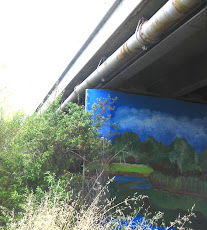
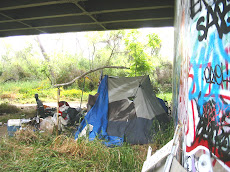







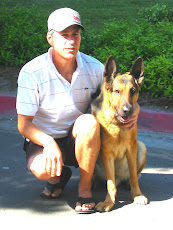
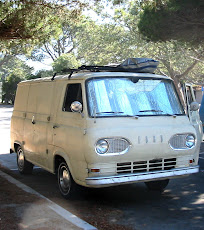
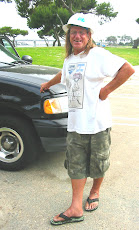









No comments:
Post a Comment